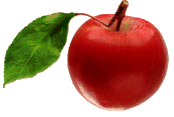
Frequently asked questions
How do I plant a potted tree?
How do I plant a potted tree?
If the tree is on Malling 9 (M9)(dwarf apple), Bud 9 (B9) (dwarf hardy apple) or Malling 26 (M26 (semi-dwarf apple) rootstock, it will need a stake for the life of the tree (3" x 8' wooden fence post with 2' in the ground, or studded tee-post, or regular tee-post).
If on Old Home Farmingdale (OHF 87 or OHF 97) (pear), Quince (quince or pear), St Julian A (SJA) (stone fruit), Malling 7 (M7) (semi-dwarf apple), Malling-Merton (MM106, MM111, MM111-9) (semi-vigorous apple), they will need staking for a couple of months only. Antonovka (very hardy, full sized, apple) does not need staking.
Plant your tree as soon as possible.
-
Put the stake in first. Dig hole only as deep as the pot and at least 2x width. Do not amend the soil. Form a mound of soil in the bottom of the hole.
-
Holding the rootstock portion of the tree, take the tree out of the pot, shake off all soil and/or potting mix. Straighten out the roots so they form a circle radiating around the trunk. Cut off any broken roots and any roots which will not radiate properly.
-
Place tree on top of the mound so the roots radiate evenly around the mound and all point downwards.
-
Keep graft union as far above soil as it was in the pot.
-
Backfill the hole with the native soil. Stake should be on the windward side of the tree and about 4" away from the trunk at soil level.
-
Tie tree to the stake using an old stocking or a strip of rubber forming the tie into a figure of 8 so the tree will not bang against the stake when it is windy.
-
Step on the soil to press it against the roots.
-
Mulch with organic matter or the leftover soil from the pot or compost or leaf mulch (to retain water).
-
Water tree well to settle it.
-
If it is Spring and if the tree is a whip (see photo of a whip under 'rootstocks') and you are going to grow it as a standard pyramid-shaped tree, cut it back to 30" if it is a weak variety, or to 31-33" if it is a vigorous variety. If all goes well, the branches will form in the 6-8" below the cut. If it is Fall, do not cut back now, wait until Spring. Open cuts are vulnerable to diseases in our winter rainy season. Cut back in late February or early March just before the sap starts to rise.
-
If you are going to espalier it, follow the instructions in the Royal Horticultural Society's book: Pruning by Christopher Bricknell (references below). Making your cuts in Springtime.
-
If it is a two-year old tree with branches, remove all branches below 18". Cut back the other branches to form a pyramid with the lowest branches being cut back to 12". Always make your cuts in Springtime.
Water well for the first two years. Keep area weed-free.
Once the tree has filled the space allotted for it, start Summer-Pruning using the Modified Lorette System
